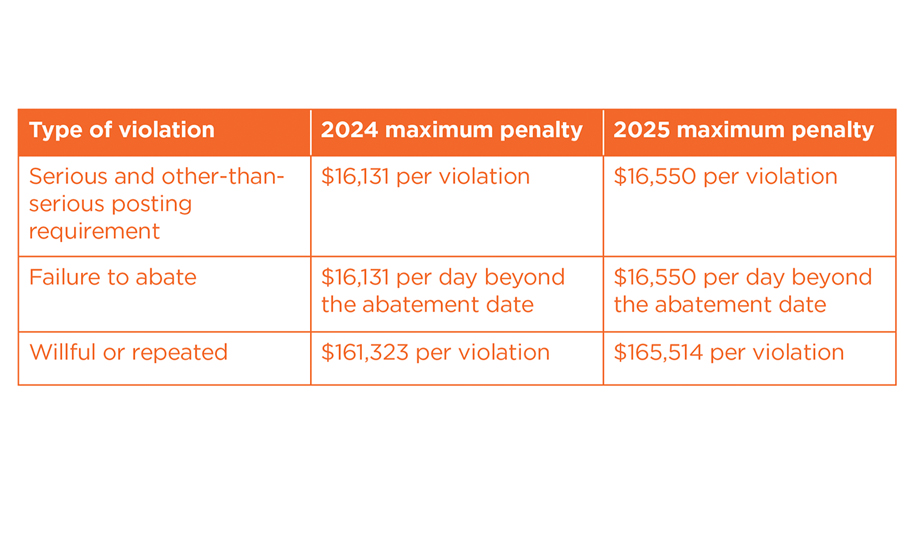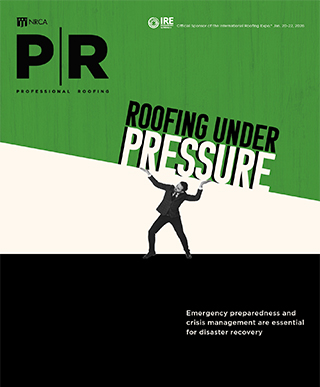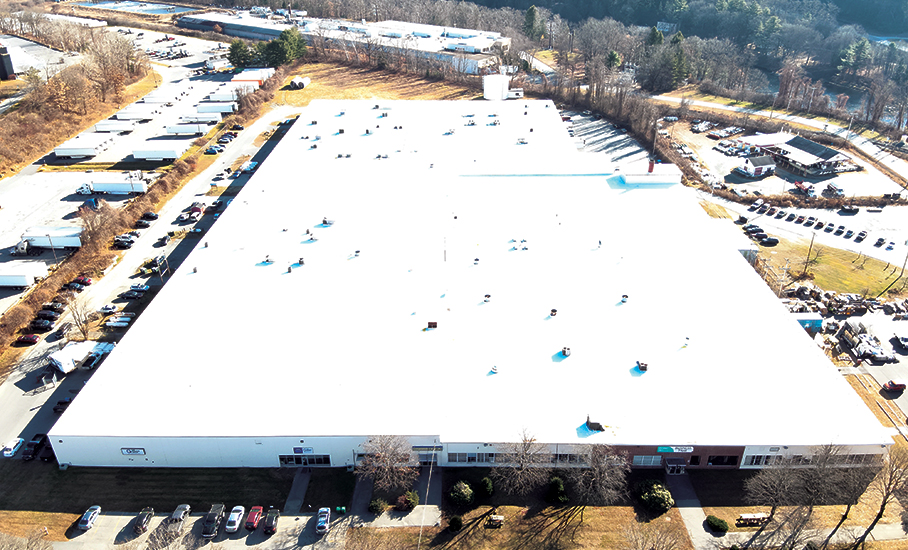
The Occupational Safety and Health Administration’s regulatory activity continues to be robust with several regulatory items making news at the end of 2024 and leading into 2025. These include heat rulemaking, personal protective equipment fit and increased civil penalties.
Heat rulemaking update
The new year began with the closing of the final public comment period for OSHA’s heat rulemaking. On Jan. 14, 2025, NRCA, along with a coalition of construction trade associations, submitted comprehensive public comments regarding the proposed final rule for OSHA’s heat rulemaking. NRCA has been actively engaged in the regulatory process for this proposal since it began in October 2021 when OSHA announced it was initiating rulemaking to protect indoor and outdoor workers from hazardous heat in all workplaces.
NRCA participated in the rulemaking process and advocated for a flexible approach to the heat rulemaking. It also expressed concerns with OSHA’s efforts to regulate the hazards of excessive heat at various points throughout the rulemaking process. NRCA provided public comments in response to the advanced notice of proposed rulemaking, as well as asked members to participate in the Small Business Regulatory Enforcement Fairness Act review process so they could provide OSHA with detailed information about current roofing industry safety practices and the potential effect the new rule may have on small entities.
NRCA and other construction industry trade associations encouraged OSHA to adopt a flexible, performance-based approach to any new standard and expressed concerns with the overly broad, prescriptive standard, which did not adequately consider the unique challenges small employers face or geographic differences. The public comments submitted in January also requested OSHA hold in-person informal public hearings to ensure effective public engagement in this rulemaking. Should a final rule be issued, OSHA was encouraged to adopt a phased-in compliance period to ensure employers have the best opportunity to implement effective procedures to meet their obligations.
NRCA continues to follow and remains engaged in the OSHA rulemaking process for this standard and will keep members updated as new information becomes available.
PPE rule finalized
In addition to heat rulemaking activity, OSHA finalized a revision to the PPE standard for construction Dec. 11, 2024. The final rule requires employers provide PPE and ensure the equipment properly fits any construction worker who needs it to improve protections from hazardous conditions. The change is designed to align the construction industry standard with the standard already in place for general industry.
In OSHA’s press release announcing the final rule, Assistant Secretary for Occupational Safety and Health Doug Parker said: “I’ve talked to workers in construction, particularly women, who have spoken of personal protective equipment that didn’t fit or was simply unavailable at the job site in their size.”
Improperly sized PPE can be ineffective in protecting workers; create new hazards for workers; or discourage use because of poor fit or discomfort, such as improperly fitting fall-protection harnesses and oversized gloves or protective clothing being caught in machinery. OSHA’s news release went on to say: “The matter has been a long-standing industry safety concern, particularly among some women as well as among physically smaller or larger workers.”
Before the final rule was issued, NRCA participated in public comments about the rulemaking with the Construction Industry Safety Coalition to express the construction industry’s concerns. Comments included urging OSHA to clarify what it means by the terms “properly fit” and “additional hazards” and the clarification must include specificity so covered industries better understand their compliance obligations. In addition, OSHA was urged to clarify how it will enforce this regulation and delineate objective measures regarding what constitutes “improper fit.”
The final rule became effective Jan. 13.
OSHA increases civil penalties
In addition, the Department of Labor has issued a final rule announcing adjustments for inflation to OSHA’s civil monetary penalty amounts. The final rule became effective Jan. 15.

OSHA violations and penalties
In November 2015, the Federal Civil Penalties Inflation Adjustment Act Improvements Act of 2015 was enacted, which required agencies to adjust the level of civil monetary penalties with an initial “catch-up” adjustment through an interim final rule and make subsequent annual adjustments for inflation no later than Jan. 15 of each year.
The maximum penalty amounts for serious and other-than-serious posting requirement violations; failure to abate; and willful or repeated violations all increased (see figure).
OSHA requires all state plans to align their maximum violation penalties with its penalty structure. States that operate occupational safety and health plans are required to adopt maximum penalty levels that are at least as effective as federal OSHA’s levels. State plans are not required to impose monetary penalties on state and local government employers.

CHERYL AMBROSE, CHST, OHST
Vice president of enterprise risk management
NRCA



